HMS Sheffield: City centre comes to a standstill during ceremony held to mark 40 years since sinking of Royal Navy ship
and live on Freeview channel 276
The Royal Navy warship named after the Steel City was struck by an Argentine missile on May 4, and later sunk on May 10 in 1982. Of the 268 crew many were taken to safety but 20 were killed and more injured.
For a moment this morning the city centre came to a standstill to witness a parade by the Sheffield Sea Cadets at the war memorial in Barker’s Pool.
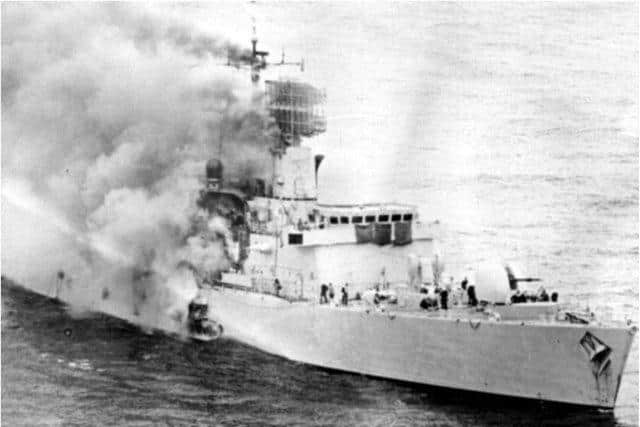

Advertisement
Hide AdAdvertisement
Hide AdThe Lord Lieutenant of South Yorkshire Professor Dame Hilary Chapman DBE and the Lord Mayor of Sheffield, councillor Gail Smith, took the salute accompanied by other senior dignitaries.
Wreath laying and a service followed at the HMS Sheffield Memorial at the Cathedral.
Father Grant Naylor, priest of St Matthew’s Church in Carver Street, said: “We gather together conscious of the sacrifice made 40 years ago by those men that went down with the Sheffield. And with those who were injured and those who came back with the mental scars of fighting in that particular conflict.
"We gather together to give thanks to all those who paid the ultimate sacrifice."
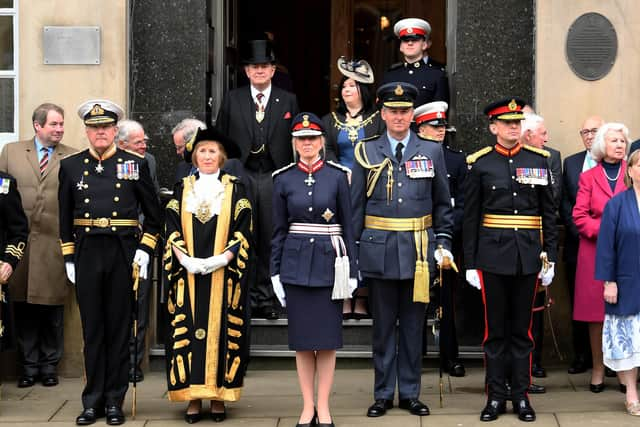

Advertisement
Hide AdAdvertisement
Hide AdHe also made reference to modern day conflicts, in particular the Russian invasion of Ukraine.
“People throughout the world today also face challenges and tyranny and also struggle to exercise their right of self-determination.
"We pray especially for the people of Ukraine too in their struggle and we express our solidarity and our unity with them.”
Coin Smith described taking the salute on behalf of Sheffield as an ‘honour’ and described today as a ‘very important day of remembrance.”
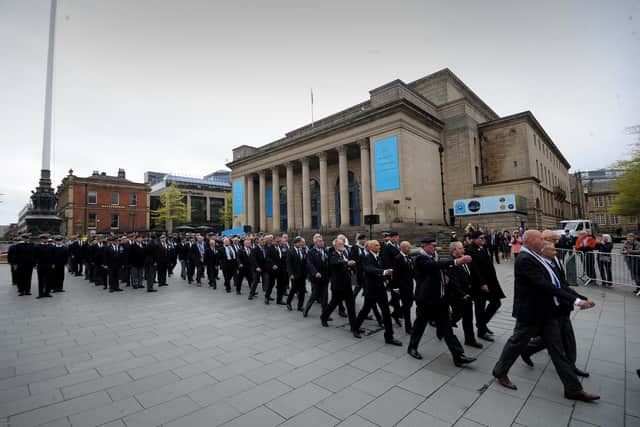

Advertisement
Hide AdAdvertisement
Hide AdAs well as the parade and service in Sheffield a new memorial is being unveiled at the National Memorial Arboretum in Burton-on-Trent on Wednesday, May 4.
The HMS Sheffield Association Committee commissioned the memorial to celebrate the service of those who served in the 3 ships (Cruiser, Destroyer and Frigate) that bore the name of HMS Sheffield.
It is also intended that the memorial acts as a place of remembrance for the members of the Ship’s Company lost in action whilst serving on the Destroyer in 1982 during the Falklands Conflict.
The memorial, which is made of Sheffield stainless steel, is engraved with the following words:
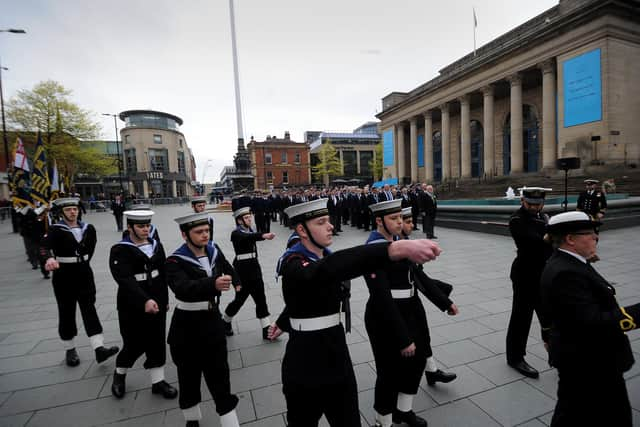

‘Shiny Sheff’
Advertisement
Hide AdAdvertisement
Hide AdFor all who served in the three HMS SHEFFIELD ships Cruiser 1937-67, Destroyer 1970-82, Frigate 1986-2002
Unveiled 4th May 2022 40th anniversary of the loss of HMS SHEFFIELD and twenty of the Ship’s Company in The Falklands Conflict
‘Fair Winds and Following Seas’
The warship carried many fixtures and fittings manufactured in Sheffield, including a great number of stainless steel items, leading to the nickname the ‘Shiny Sheff’.
Sheffield was the first British warship to be lost in 37 years.
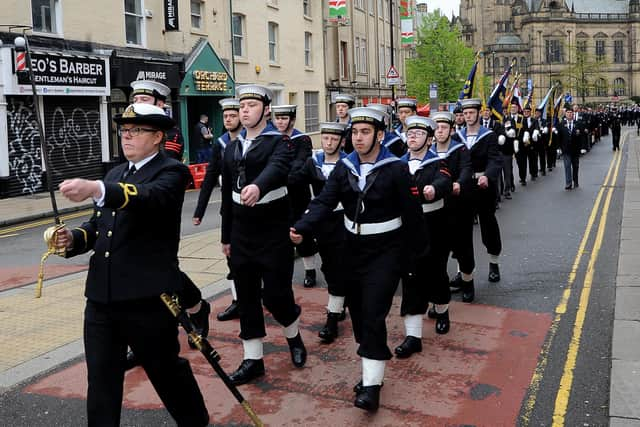

Advertisement
Hide AdAdvertisement
Hide AdThe 4,100-ton destroyer was struck by a missile fired from an Argentine fighter bomber as it carried out a scouting mission off the Falklands, which Argentina had invaded and claimed as their own weeks earlier.
The ship caught fire when a French-made Exocet missile penetrated deep into HMS Sheffield's control room. The blaze caused a poisonous smoke and most of the crew abandoned ship.
Announcing the news on television, the spokesman for the Ministry of Defence Secretary, Ian McDonald, said the ship was "in the course of its duty within the total exclusion zone around the Falkland Isles."
The attack followed the sinking of the Argentine cruiser General Belgrano. An Argentine diplomat in the United States said back in 1982 that the destruction of HMS Sheffield was "justified after the massacre that the English have done shelling our men and our ships."
Advertisement
Hide AdAdvertisement
Hide AdA major rescue operation was launched in the South Atlantic as relatives thousands of miles back in the UK waited for news of their loved ones.
After the ship was struck and as her crew were waiting to be rescued, Sub Lieutenant Carrington-Wood led the crew in singing "Always Look on the Bright Side of Life" from Monty Python’s Life of Brian.
Over the six days after it was hit on May 4, five inspections were made to see if any equipment was worth salvaging. Orders were issued to shore up the hole in Sheffield's starboard side and tow the ship to South Georgia.
However, before these orders were effected the burnt-out hulk had already been taken in tow by the Rothesay-class frigate Yarmouth. The high seas that the ship was towed through caused slow flooding through the hole in the ship's side. This was the cause which eventually took her to the bottom. The ship sank on May 10.
Advertisement
Hide AdAdvertisement
Hide AdIt was the first of four Royal Navy ships sunk during the Falklands War. The others were the frigates Ardent and Antelope and the destroyer Coventry.
After a bloody land battle, Argentine forces surrendered to the British forces and peace was declared on June 20.
The shipwreck of HMS Sheffield is now a protected war grave.
In November 2018 it was announced that a new warship would be named HMS Sheffield.
Advertisement
Hide AdAdvertisement
Hide AdOne of eight anti-submarine vessels to be built, it will be the fourth HMS Sheffield to serve the Royal Navy.
The new warship has been commissioned and will be built in the second phase of construction of the new Royal Navy warships.

